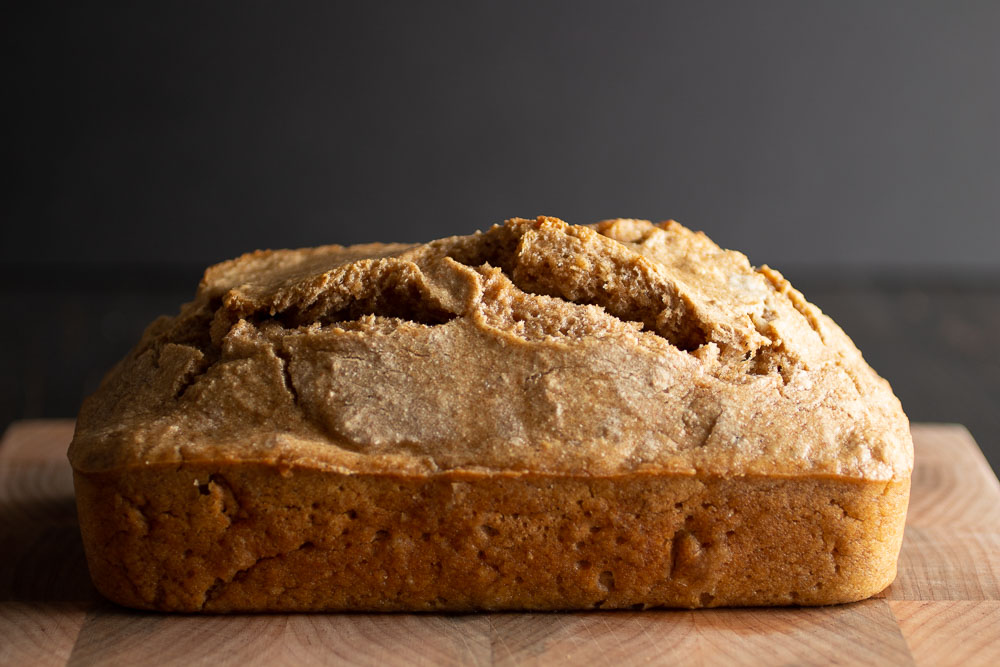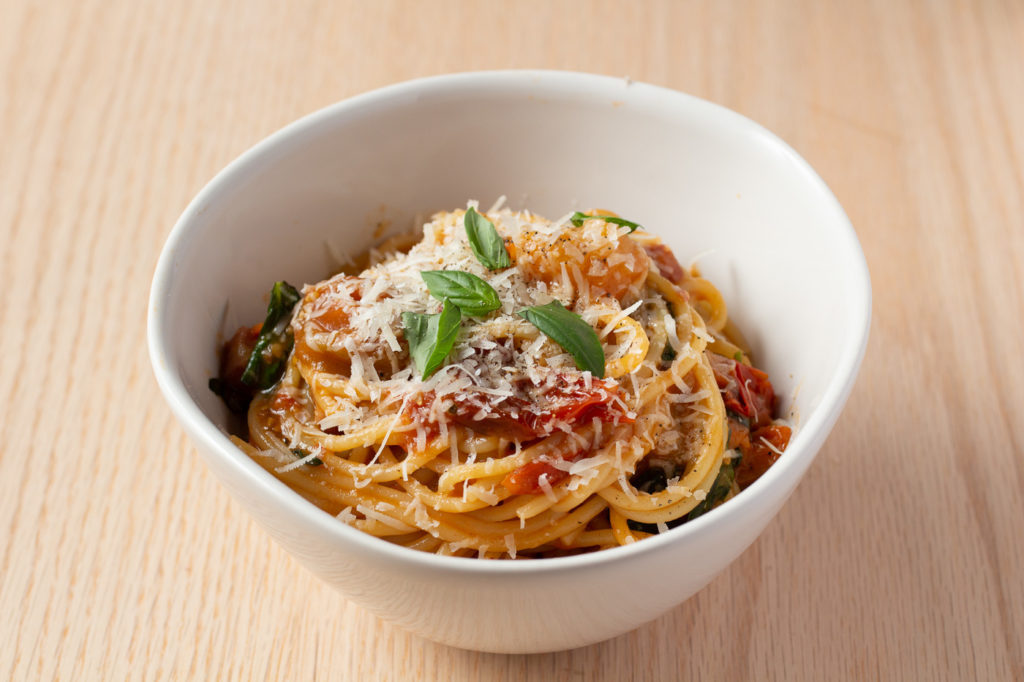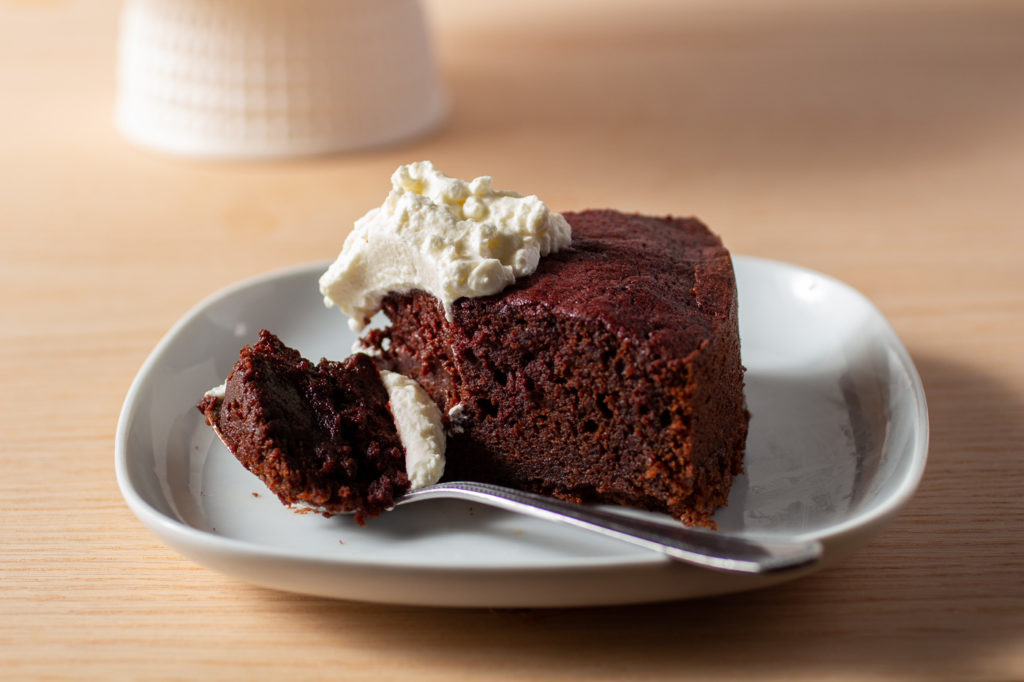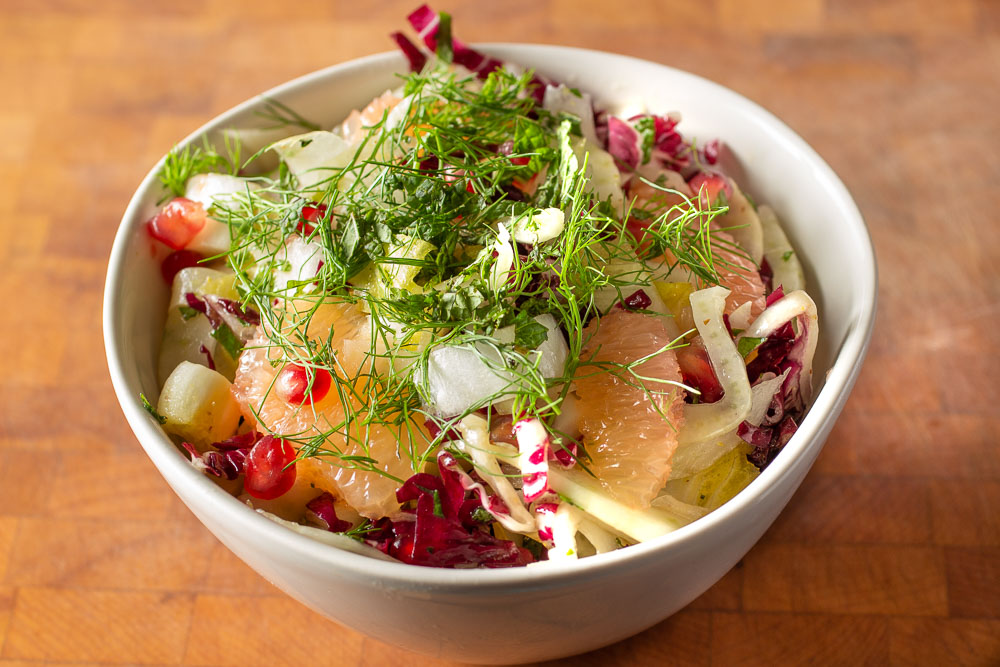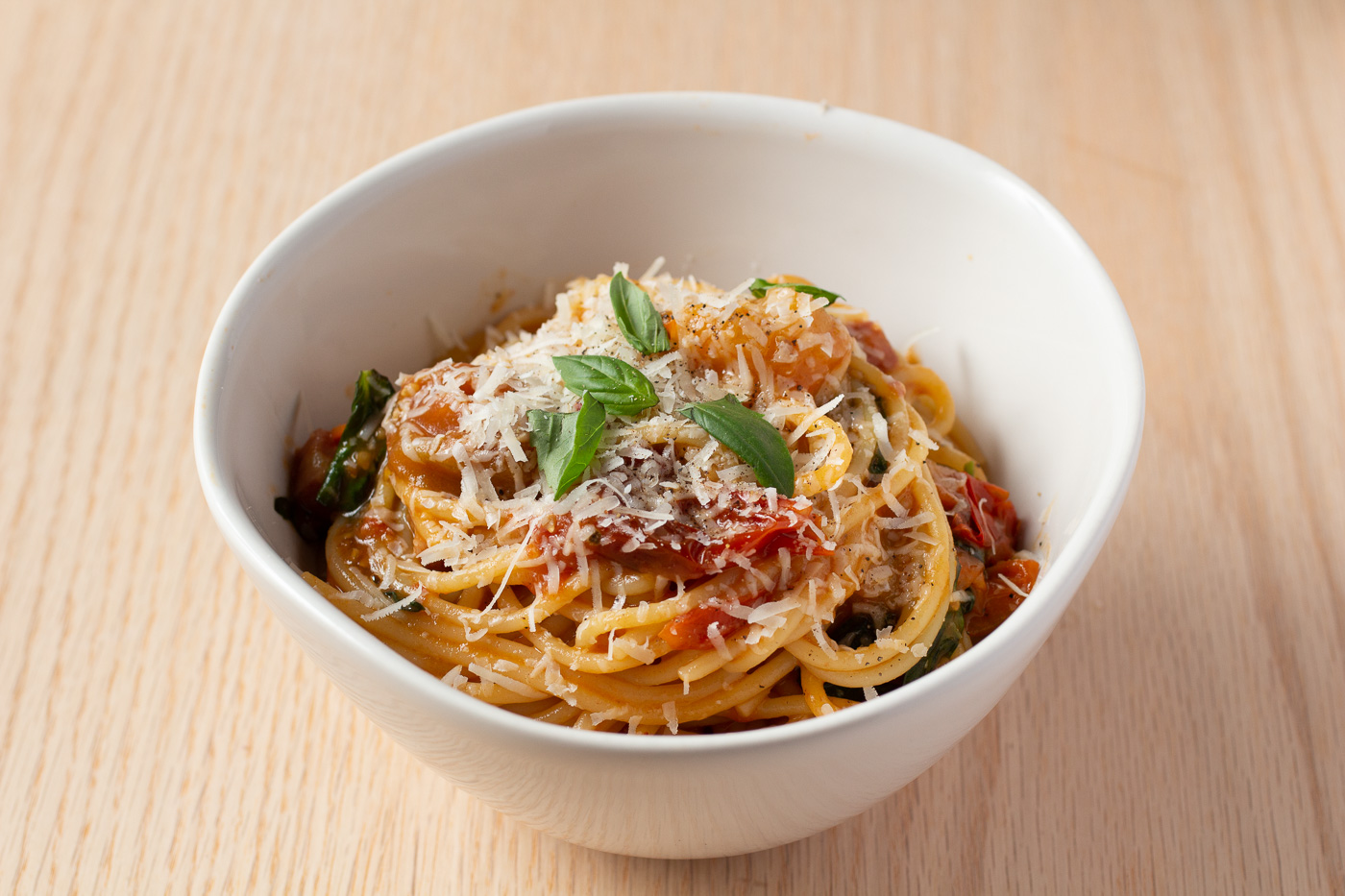
spaghetti with pancetta and cherry tomatoes
Spaghetti in a velvety pan sauce—laced with chewy bites of pancetta and cherry tomatoes—is currently my favourite thing to eat when dinner is urgent and I can hardly be bothered to chop a single thing. The world overflows with variations on pasta with tomatoes, cured pork, and parmesan, but as someone whose mother has affectionately called them “spaghetti soul” (there’s more of a ring to it in Russian), I would be remiss not to share my favourite version. There are many like it, but this one is mine.

Matthew Amster-Burton, writer and co-host of the wonderfully comedic food podcast Spilled Milk, has rightly said that pasta with pancetta is less about the (admittedly delightful) bits of protein than the flavour it imparts to the entire dish. That’s why pancetta goes in the pan first, to be lightly cooked and have its fat rendered out, followed by a stampede of whole cherry tomatoes. They’ll blister and burst in the pan slicked with pork fat, marrying their umami-rich selves* to the pork** and yielding a fantastically low-effort sauce you’ll bring together with starchy pasta water and parmesan. Low-effort, high-reward, one-pan, quadruple-hyphenated dinner.
Arguably the best part of this recipe is that all you have to do, besides fiddle with the knobs on your stove and be a tiny bit patient, is chop a small amount of pancetta and sliver a few cloves of garlic. And since cherry tomatoes—while best in the summer from the farmer’s market yada yada—are pretty much fine year-round, this is good to add to your winter rotation. You could serve it with a sharp green salad, if you wanted, but I prefer to plop myself down in front of the TV with one bowl in hand.
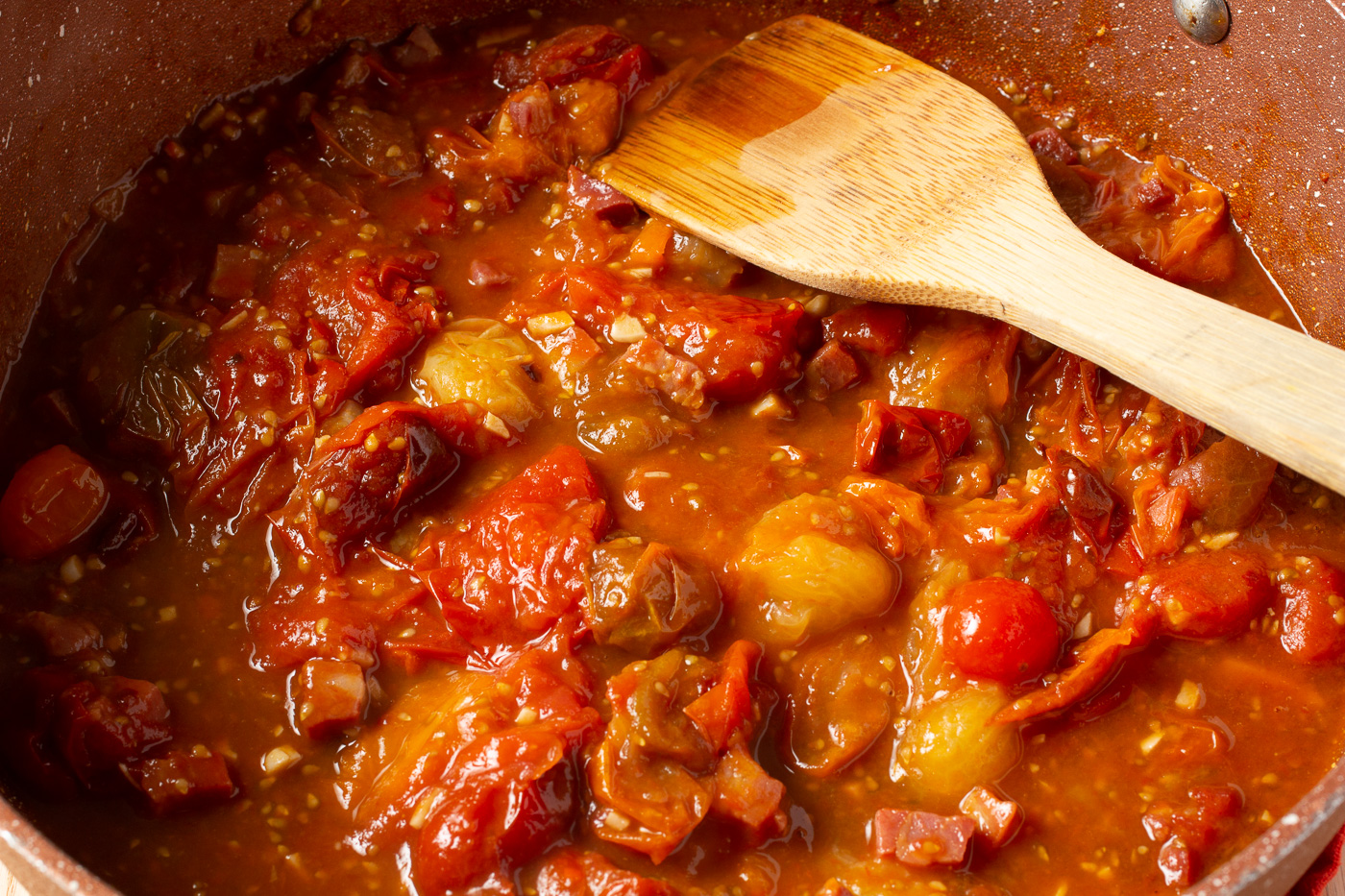
*Tomatoes are among the best plant-based sources of umami thanks to their high glutamate content—especially that of their jelly-like seeds, which is why I never listen to anyone who says I must de-seed my tomatoes for maximum elegance or whatever. Besides aesthetics, some recipes include this step for textural reasons, but that doesn’t seem like a fair tradeoff to me.
**A handy thing to know about umami, or savouriness, is that it’s synergistic—that is, we sense it more strongly when different types of umami-tasting (that’s the scientific term) compounds are present in a single dish. Vegetables and cheeses, like cherry tomatoes and parmesan, tend to be rich in glutamate, while animal-based ones like pork have lots of inosinate. Good in isolation, better together. Here’s a deep dive on that.
ingredients
extra-virgin olive oil 1 tablespoon
pancetta about 80g, cut into cubes
cherry tomatoes 2 pints
garlic 2-3 cloves
red chili flakes a pinch
basil 1 bunch, torn or roughly chopped
spaghetti 240g, or enough for two
parmesan 1/3 cup, grated
prep
Cut the pancetta into cubes, grate the parmesan on a microplane the small side of a box grater, and sliver (or finely slice) the garlic. Pick the basil off its woody stem, and if you’re up for a little more chopping, run your knife through the leaves a few times. If not, tear it up or just leave it whole. Set a large pot of generously salted water to boil (this is for your spaghetti).
make the sauce
Heat a large, high-sided skillet on medium. Add the olive oil and pancetta. Stir and leave it alone for two minutes. It’ll smell meaty and promising. Stir again and cook for another four to six minutes till it’s lightly golden and some of the fat has rendered out.
Add the cherry tomatoes, stir to cover in fat, and cook for about 4 minutes till they’re blistered in spots, moving them around occasionally.
Add the garlic and a small pinch of chili flakes. Cover, turn the heat down to low and cook for around 20 minutes. In the meantime, cook your spaghetti to just al dente, according to the package directions, in a large pot of well-salted water. (Ideally, you want the pasta to be done around the same time as the sauce, so start boiling water at this step).
When the sauce is done, it should have some liquid in it, but if it seems excessively soupy, uncover it and turn the heat up to reduce the liquid for a few minutes. Taste it: it should be sweet, savoury and meaty. If it’s a little too salty or acidic, it’s likely your cherry tomatoes weren’t particularly sweet—add a small pinch of sugar to bring the flavours back into balance.
Turn off the heat and add the pasta and basil (either directly from the pot with tongs, which should carry the right amount of starchy water with it, or from a strainer with liquid at the ready). Toss around with tongs till things look silky and emulsified, adding more pasta water as needed. Taste again, and adjust with more salt, chili flakes, or a bit of sugar, keeping in mind the parmesan will add its own salt*.
*I don’t recommend adding salt to anything besides the pasta water before your final taste. The combined forces of pancetta and parmesan typically have enough to carry the dish.
serve
It’s nice to swirl spaghetti into a bowl with a pair of tongs (or just pile it in). Top with grated parmesan, and if you like, a drizzle of olive oil and more fresh basil.
a note on spaghetti
It’s always better to have sauce waiting for pasta than the other way around, but if your spaghetti is done early, save a cup of the starchy cooking water before you strain it—you’ll need it to help bind the sauce.
(Finally, is anyone seriously cooking a mere two ounces or 56 grams of pasta per person, as the box presumptuously recommends? Like the serving sizes on boxed mac and cheese, this seems like some aspirational bullshit).

